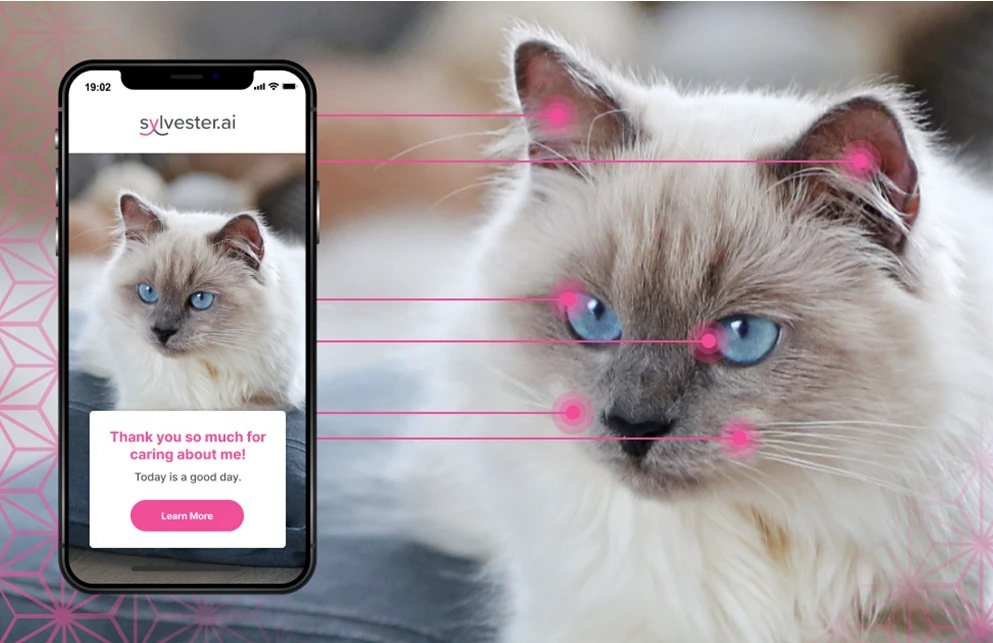How does sylvester.ai work?
Sylvester.ai harnesses the power of artificial intelligence to decode the subtle nuances of feline facial expressions.
Sylvester.ai employs advanced artificial intelligence algorithms to interpret the intricate facial expressions of cats. Our model, trained on a vast dataset of feline images, has been meticulously refined to accurately assess pain levels based on a comprehensive set of facial cues.
The Science of Pain Detection:
Facial Feature Analysis: Our algorithm scrutinizes specific facial features, including ear position, eye dilation, and whisker orientation, to identify subtle indicators of pain.
Postural Assessment: We analyze a cat's overall posture, including body position and tail placement, for additional clues about their comfort level.
Machine Learning: Through a process of machine learning, our model continuously improves its accuracy by analyzing new data and refining its understanding of feline pain expressions.
The Benefits of AI-Powered Pain Assessment:
Objective Pain Evaluation: Sylvester.ai provides an objective assessment of pain, reducing the subjectivity often associated with human observation.
Early Intervention: By detecting pain early, you can work with your veterinarian to implement timely interventions and improve your cat's quality of life.
Enhanced Veterinary Care: Sylvester.ai can serve as a valuable tool for veterinarians, aiding in diagnosis and treatment decisions.
Key Research Papers
Evaluation of facial expression in acute pain in cats. J. Small Anim. Pract. 55: 615-621. Holden et al 2014. https://doi.org/10.1111/jsap.12283
Behavioural signs of pain in cats: an expert consensus. PLoS ONE 11(2): e0150040. Merola & Mills. 2016. https://doi.org/10.1371/journal.pone.0150040
Geometric morphometrics for the study of facial expressions in non-human animals, using the domestic cat as an exemplar. Sci. Rep. 9: 9883. Finka et al 2019 https://doi.org/10.1038/s41598-019-46330-5
Development of a behavior-based measurement tool with defined intervention level for assessing acute pain in cats. J. Sm. Anim. Pract. 55(12): 622–629. Calvo et al 2014. https://doi.org/10.1111/jsap.12280
Validation of the English version of the UNESP-Botucatu multidimensional composite pain scale for assessing postoperative pain in cats. BMC Vet. Res. 9: 143 – 158. Brondani et al 2013. https://doi.org/10.1186/1746-6148-9-143
Facial Expression: An Under-Utilized Tool for the Assessment of Welfare in Mammals. ALTEX 34 (3) :409-429. Descovich et al 2017. https://doi.org/10.14573/altex.1607161
Definitive Glasgow acute pain scale for cats: validation and intervention level. Vet Rec. 108(18): 444-446. Reid et al 2017. https://doi.org/10.1136/vr.104208

Definitions
-
Artificial Intelligence (AI) is computer intellect that can perceive, make decisions, and solve problems. AI helps with augmentation and automation of tedious or repetitive tasks.
-
Machine learning, a subset of artificial intelligence, enables computers to learn without being explicitly programmed. By looking at a large number of labelled images, machine learning algorithms can find small patterns across an array of pictures and use these patterns to assess new photos. As a dataset grows larger, the artificial intelligence model grows smarter. This allows inaccuracies to be minimized and deeper insights to be brought forward.
-
Computer Vision is a type of machine learning that gives machines a high-level understanding of video and/or still images by automating the tasks of human vision, allowing computers to understand and interpret the visual world. Tasks include object detection, object recognition, object tracking, 3D scene construction and more.


